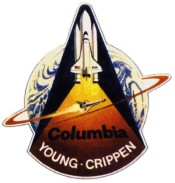

The new photos will be compared to the earlier Voyage and Galileo images to spot any differences in the striations and any other discernable marks on its surface.

In the space of only 25 minutes it has already snapped five different pictures of the satellite as it raced by. NASA’s JunoCam, which has already taken magnificent images of Ganymede, is also responsible for taking the new photos of the largest moon of Jupiter. “(The microwave radiometer) will provide the first in-depth investigation of how the composition and structure of the ice varies with depth, leading to a better understanding of how the ice shell forms and the ongoing processes that resurface the ice over time.” Southwest Research’s Bolton said in a statement “Ganymede’s ice shell has some light and dark regions, suggesting that some areas may be pure ice while other areas contain dirty ice. Scientists will employ NASA’s microwave radiometer to identify what the lighter and darker patches on the moon consist of as well as how the moon maintains its frozen shell. The new NASA probe will begin collecting its scientific data fully three hours before it even arrives at its closest approach to Ganymede.ĬNN reports that there’s even some intriguing evidence that an ocean may lie beneath Ganymede’s icy exterior. Its state-of-the-art technology include three different cameras, an array of radio instruments, an ultraviolet spectrograph, a microwave radiometer, and the “Jovian Infrared Auroral Mapper.” “Pioneer 10,” launched on March 2, 1972, was the first spacecraft to pass through the asteroid belt and the first to make direct observations and obtain close-up images of Jupiter.Ī report in says that the new probe has several instruments designed to take even more spectacular photographs of Ganymede and gather more data on how it is composed. Juno’s current flyby is the closest any spacecraft has been to the frozen moon of Jupiter since the “Galileo” probe flew by Ganymede back in the year 2000.īefore that time, NASA’s dual “Voyager” probes had observed the moon years earlier, in 1979. Although this atmosphere is much too thin to support life as we know it, astronomers speculate that at one time there could have been conditions that were conducive to life on Ganymede and other such satellites. The Hubble Space Telescope was the first space probe to discover evidence of a thin layer of oxygen-rich atmosphere trapped in Ganymede’s icy surface back in 1996. Over the spherical shell of iron-rich rock, Ganymede is covered by a 497-mile-thick ice shell that makes up the moon’s visible surface. Its iron core produces the magnetic field, which is responsible for creating visible ribbons of glowing auroras enveloping both its north and south poles. The gigantic moon is the only such body in our solar system with its own magnetic field, according to a report from T he Verge. “By flying so close, we will bring the exploration of Ganymede into the 21st century, both complementing future missions with our unique sensors and helping prepare for the next generation of missions to the Jovian system.”


 0 kommentar(er)
0 kommentar(er)
